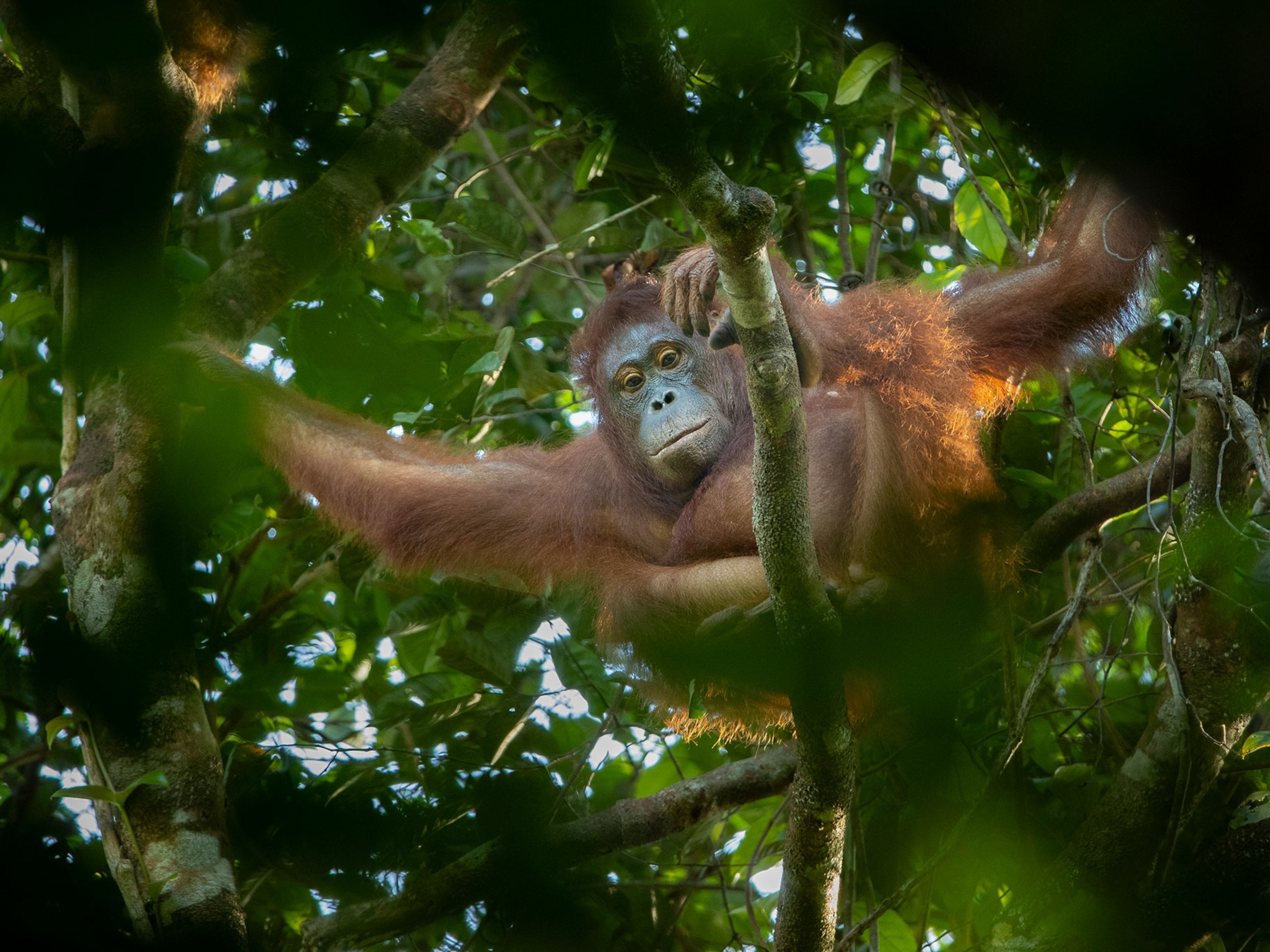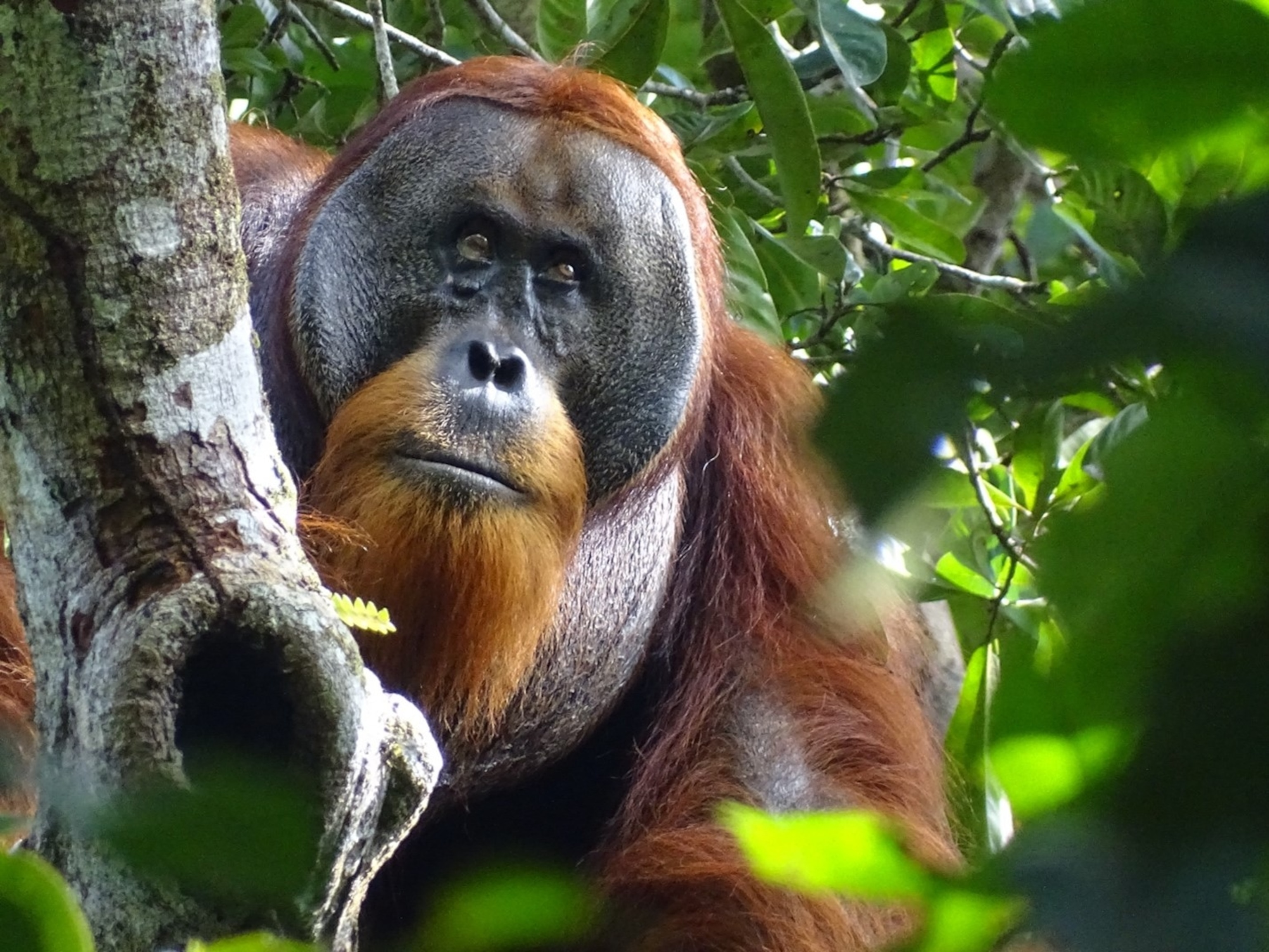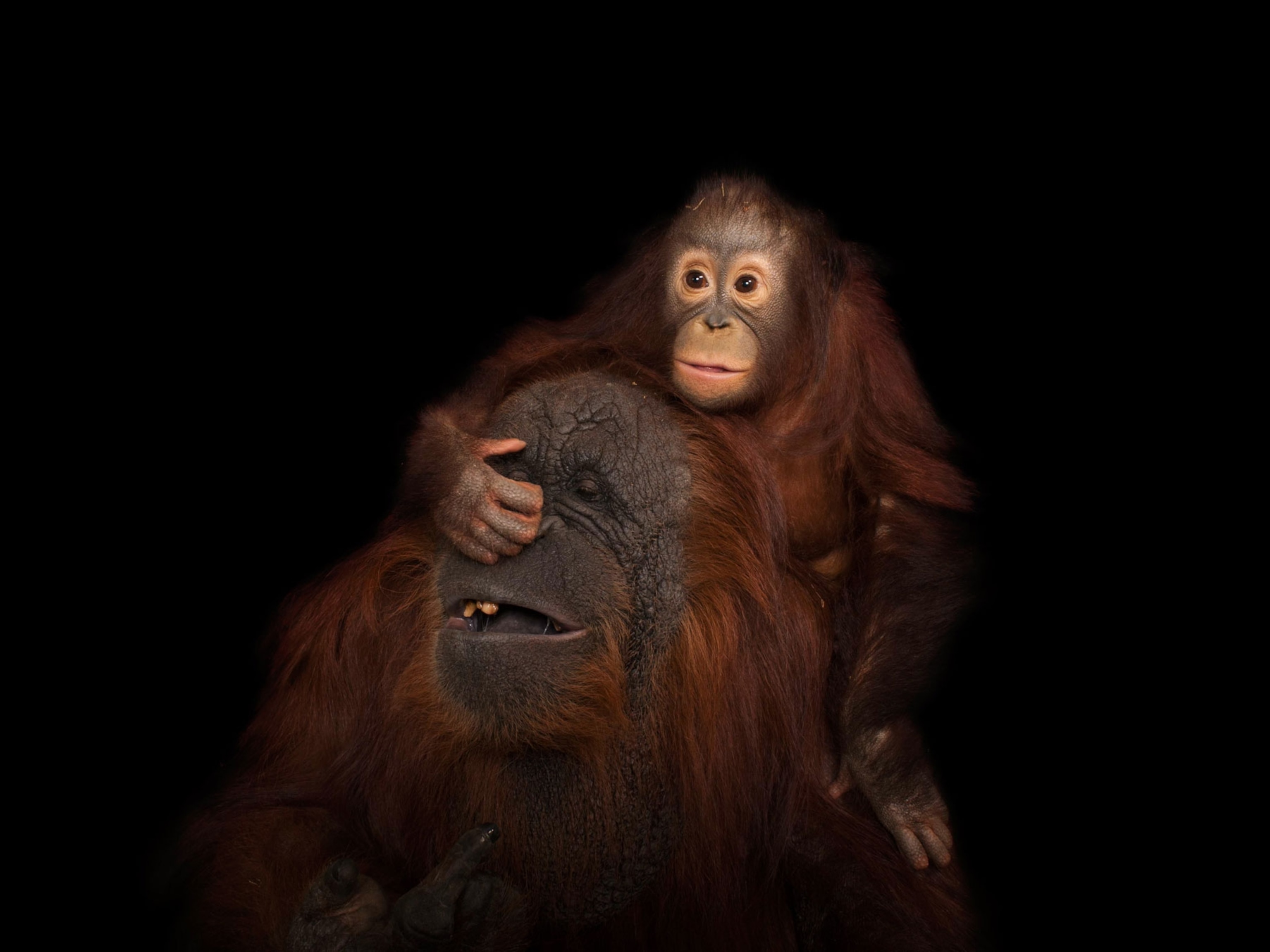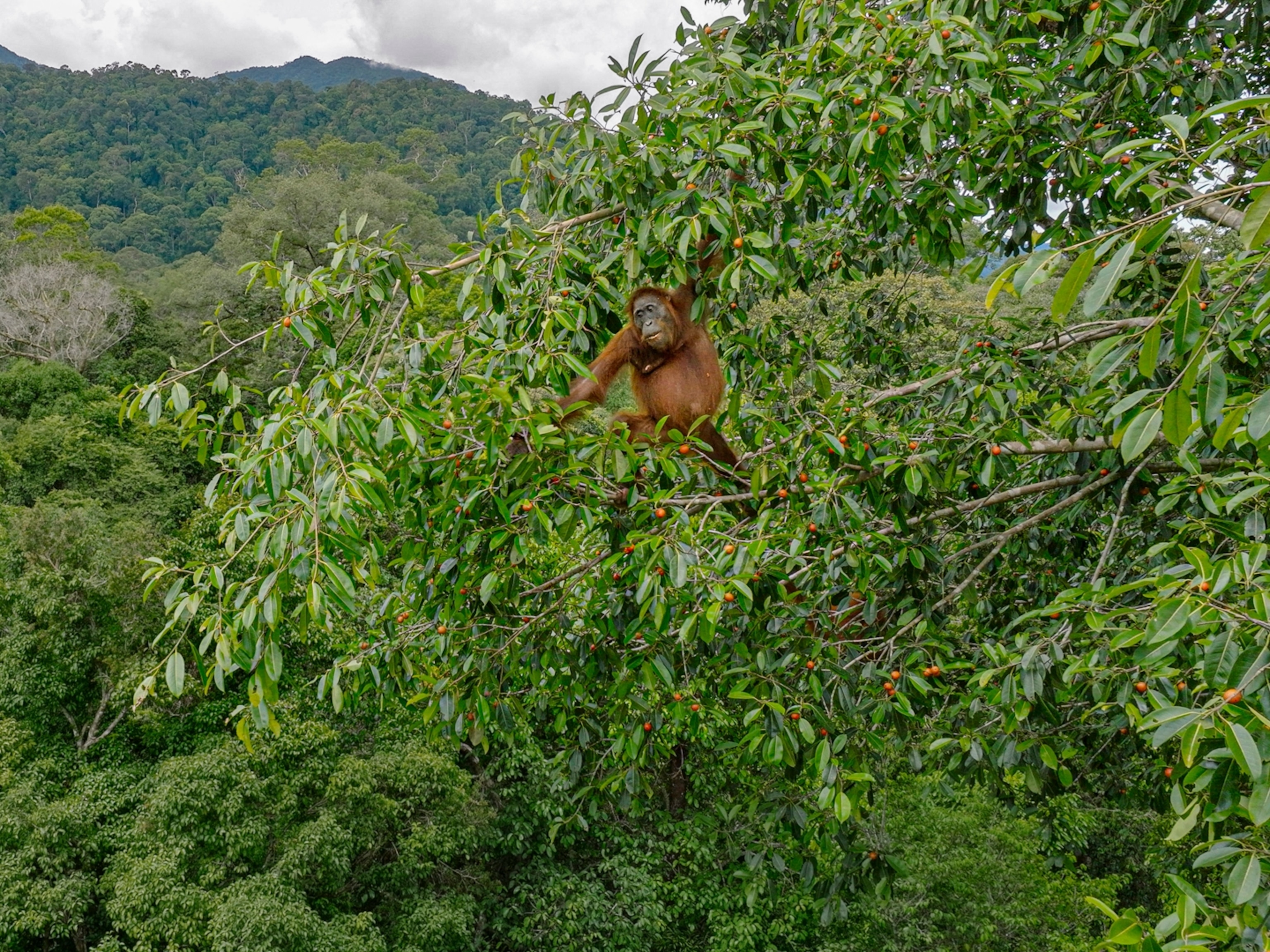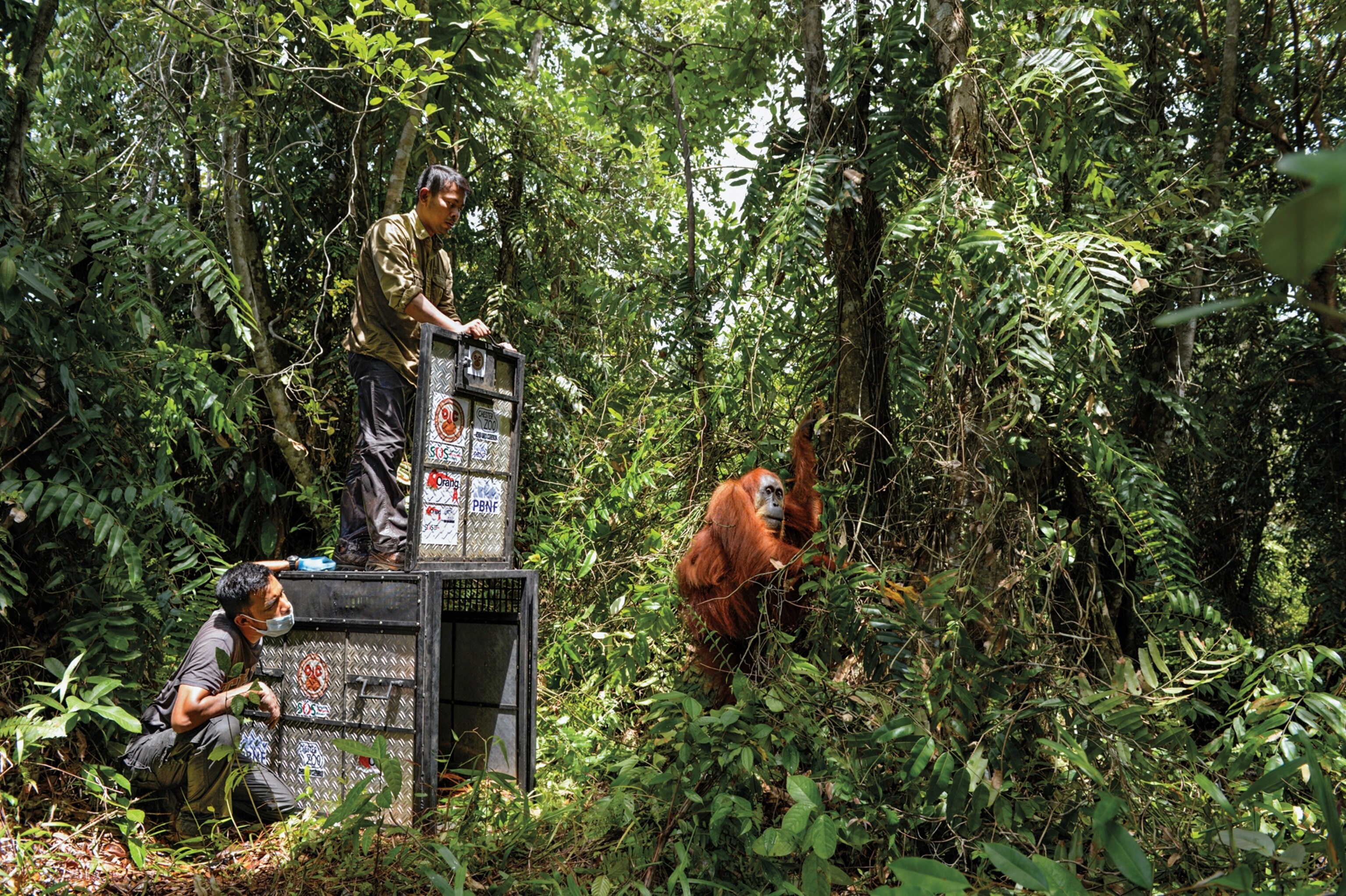
Protecting Orangutans Means Chasing Down Traffickers
In Indonesia, the docile creatures are traded as pets with impunity.
PANUT HADISISWOYO Conservationist
Orangutans that live in Sumatra usually make their nests in palm forests. But one day in 2014, Panut Hadisiswoyo caught sight of an orangutan riding around the streets of Medan, the island’s largest city, in a rickshaw. Hadisiswoyo runs the Orangutan Information Centre, an Indonesian NGO devoted to saving endangered apes, and so he gave chase, on foot, through traffic. “I jumped in the rickshaw and made the driver stop,” he says. Then he put the orangutan’s chaperone, a wildlife trader, under citizen’s arrest and called for backup from his staff. The police arrived three hours later.
His work is not often that exciting. It’s also rarely easy. The National Geographic emerging explorer spends most of his time trying to stop deforestation by palm oil and other commodity companies in the Leuser ecosystem, one of Asia’s largest lowland rain forests. He has worked with drone photographers to identify sensitive areas to protect, not only for orangutans but also for rhinos and tigers.
Unlike elephants or rhinos, whose body parts are trafficked, orangutans tend to be trafficked themselves (their docile demeanor makes them attractive as pets). Few offenders have been prosecuted in Indonesia and even fewer convicted. Yet Hadisiswoyo and his group do make progress. Since 2001, they’ve returned more than 2,500 acres of forest to habitat land. And that orangutan from the rickshaw? The police questioned the trader, and the animal was reintroduced into the wild.

